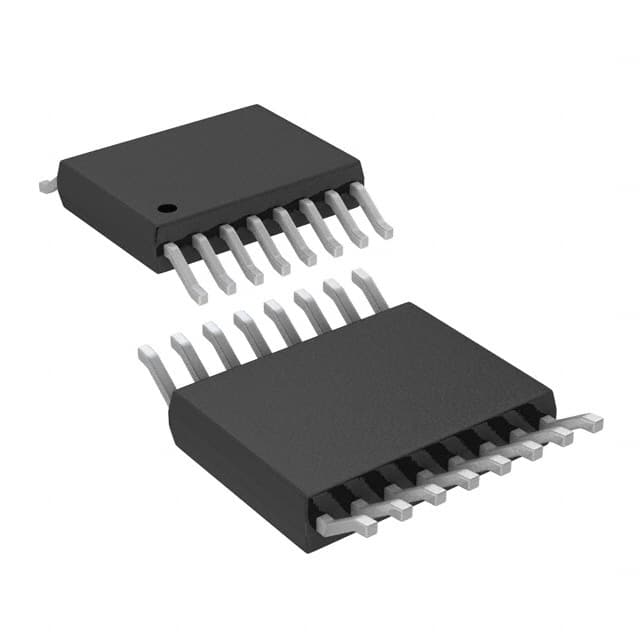Xem thông số kỹ thuật để biết chi tiết sản phẩm.

LTC6909CMS#PBF
Product Overview
Category
LTC6909CMS#PBF belongs to the category of integrated circuits (ICs).
Use
This product is commonly used as a precision programmable oscillator.
Characteristics
- High accuracy and stability
- Wide frequency range
- Low power consumption
- Small form factor
- Easy to integrate into various electronic systems
Package
LTC6909CMS#PBF is available in a miniature 10-lead MSOP package.
Essence
The essence of LTC6909CMS#PBF lies in its ability to generate precise and stable clock signals for various applications.
Packaging/Quantity
This product is typically sold in reels, with each reel containing a specific quantity of LTC6909CMS#PBF ICs.
Specifications
- Frequency Range: 1kHz to 20MHz
- Frequency Accuracy: ±0.5%
- Supply Voltage: 2.7V to 5.5V
- Operating Temperature Range: -40°C to 85°C
- Output Type: Square wave
Detailed Pin Configuration
LTC6909CMS#PBF features the following pin configuration:
- GND (Ground)
- VCC (Supply Voltage)
- FREQ (Frequency Control Input)
- SET (Frequency Setting Input)
- OUT (Output)
- NC (No Connection)
- NC (No Connection)
- NC (No Connection)
- NC (No Connection)
- NC (No Connection)
Functional Features
- Programmable frequency control through the FREQ and SET pins
- Ability to generate square wave output signals with precise frequencies
- Low power consumption, making it suitable for battery-powered devices
- Excellent frequency accuracy and stability over a wide temperature range
Advantages and Disadvantages
Advantages
- High accuracy and stability in generating clock signals
- Wide frequency range for versatile applications
- Small form factor allows for easy integration into compact designs
- Low power consumption prolongs battery life in portable devices
Disadvantages
- Limited to square wave output, not suitable for applications requiring other waveforms
- Requires external components for frequency control and setting
Working Principles
LTC6909CMS#PBF utilizes an internal oscillator circuit that can be programmed through the FREQ and SET pins. By adjusting the input signals on these pins, the desired frequency can be set. The internal circuitry then generates a square wave output signal with the specified frequency.
Detailed Application Field Plans
LTC6909CMS#PBF finds applications in various fields, including:
- Communications: Used as a clock source for data transmission and synchronization.
- Test and Measurement: Provides precise timing signals for equipment calibration and synchronization.
- Industrial Automation: Used in control systems for accurate timing and synchronization of processes.
- Consumer Electronics: Integrated into devices such as audio/video equipment, cameras, and gaming consoles for timing purposes.
- Medical Devices: Provides accurate timing signals for medical equipment and instruments.
Detailed and Complete Alternative Models
Some alternative models to LTC6909CMS#PBF include:
- LTC6908: Similar functionality with additional features like spread spectrum modulation.
- MAX038: Function generator IC with programmable frequency capabilities.
- CD4046: Phase-locked loop (PLL) IC that can generate precise clock signals.
These alternative models offer similar functionalities but may have different specifications and pin configurations. It is important to consider the specific requirements of the application when selecting an alternative model.
Word count: 514 words
Liệt kê 10 câu hỏi và câu trả lời thường gặp liên quan đến ứng dụng LTC6909CMS#PBF trong giải pháp kỹ thuật
Sure! Here are 10 common questions and answers related to the application of LTC6909CMS#PBF in technical solutions:
Q: What is LTC6909CMS#PBF? A: LTC6909CMS#PBF is a specific model number for the LTC6909, which is a precision programmable oscillator IC.
Q: What is the operating voltage range of LTC6909CMS#PBF? A: The operating voltage range of LTC6909CMS#PBF is typically between 2.7V and 5.5V.
Q: How can I program the frequency of LTC6909CMS#PBF? A: The frequency of LTC6909CMS#PBF can be programmed using an external resistor or through an I2C interface.
Q: What is the frequency range of LTC6909CMS#PBF? A: The frequency range of LTC6909CMS#PBF is typically between 1Hz and 20MHz.
Q: Can LTC6909CMS#PBF generate square wave signals? A: Yes, LTC6909CMS#PBF can generate both square wave and triangular wave signals.
Q: Is LTC6909CMS#PBF suitable for low-power applications? A: Yes, LTC6909CMS#PBF is designed for low-power operation and has a typical supply current of around 1.5mA.
Q: Does LTC6909CMS#PBF have any built-in frequency modulation capabilities? A: No, LTC6909CMS#PBF does not have built-in frequency modulation capabilities.
Q: Can I use LTC6909CMS#PBF in battery-powered devices? A: Yes, LTC6909CMS#PBF can be used in battery-powered devices due to its low power consumption.
Q: What is the temperature range for LTC6909CMS#PBF? A: The temperature range for LTC6909CMS#PBF is typically between -40°C and 85°C.
Q: Are there any application examples for LTC6909CMS#PBF? A: Yes, LTC6909CMS#PBF can be used in various applications such as clock generation, frequency synthesis, and waveform generation.
Please note that the answers provided here are general and may vary depending on specific datasheet specifications and application requirements.

